 W
WAt the Battle of Ampfing on 1 December 1800, Paul Grenier's two divisions of the First French Republic opposed the Austrian army southwest of the town of Ampfing during the French Revolutionary Wars. The Austrians, under the leadership of Archduke John of Austria, forced their enemies to retreat, though they sustained greater losses than the French. Ampfing is located 63 kilometers east of Munich and 8 km (5.0 mi) west of Mühldorf am Inn.
 W
WThe Battle of Amsteg saw a Republican French division under General of Division Claude Lecourbe face a brigade of Habsburg Austrian soldiers led by General-major Joseph Anton von Simbschen. Lecourbe's offensive began on 14 August when six columns of French infantry advanced on the upper Reuss valley from the north and east. By 16 August, Lecourbe's forces had driven Simbschen's Austrians from the valley and seized control of the strategic Gotthard Pass between Italy and Switzerland.
 W
WThe Battle of Biberach on 9 May 1800 saw a French First Republic corps under Laurent Gouvion Saint-Cyr engage part of a Habsburg Austrian army led by Pál Kray. After an engagement in which the Austrians suffered twice as many casualties as the French, Kray withdrew to the east. The combat occurred during the War of the Second Coalition, part of the French Revolutionary Wars. Biberach an der Riss is located 35 kilometres (22 mi) southwest of Ulm.
 W
WThe Battle of Cassano d'Adda was fought on 27 April 1799 near Cassano d'Adda, about 28 km (17 mi) ENE of Milan. It resulted in a victory for the Austrians and Russians under Alexander Suvorov over Jean Moreau's French army. The action took place during the War of the Second Coalition during the larger conflict known as the French Revolutionary Wars.
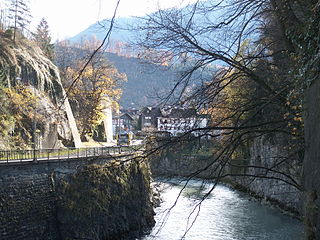 W
WThe Battle of Feldkirch saw some French corps led by André Masséna attack a weaker Austrian force under Franz Jellacic. Defending fortified positions, the Austrians repulsed all of the French columns, though the struggle lasted until nightfall. This and other French setbacks in southern Germany soon caused Masséna to go on the defensive. The War of the Second Coalition combat occurred at the Austrian town of Feldkirch, Vorarlberg, located 158 kilometres (98 mi) west of Innsbruck.
 W
WThe Battle of Gotthard Pass or Battle of St. Gotthard Pass saw an Imperial Russian army commanded by Field Marshal Alexander Suvorov supported by two Austrian brigades attack a French division under General of Division Claude Lecourbe.
 W
WThe Battle of Hohenlinden was fought on 3 December 1800, during the French Revolutionary Wars. A French army under Jean Victor Marie Moreau won a decisive victory over the Austrians and Bavarians led by Archduke John of Austria. After being forced into a disastrous retreat, the allies were compelled to request an armistice that effectively ended the War of the Second Coalition. Hohenlinden is 33 km east of Munich in modern Germany.
 W
WThe Battle of Linth River saw a French division under General of Division Jean-de-Dieu Soult face a force of Austrian, Imperial Russian, and Swiss soldiers led by Feldmarschall-Leutnant Friedrich Freiherr von Hotze in Switzerland. Soult carefully planned and his troops carried out a successful assault crossing of the Linth River between Lake Zurich and the Walensee. Hotze's death early in the action disorganized the Allied defenders who were defeated and forced to retreat, abandoning supplies accumulated for Field Marshal Alexander Suvorov's approaching army. On the same day, General of Division André Masséna's French Army of Helvetia defeated Lieutenant General Alexander Korsakov's Russian army in the Second Battle of Zurich and a French brigade turned back another Austrian force near Mollis. Both Korsakov's Russians and Hotze's survivors, led by Feldmarschall-Leutnant Franz Petrasch withdrew north of the Rhine River.
 W
WThe First Battle of Marengo or Battle of San Giuliano saw Republican French soldiers under General of Division Jean Victor Marie Moreau launch a reconnaissance in force against a larger force of Habsburg Austrian and Imperial Russian troops led by Field Marshal Alexander Suvorov. The French enjoyed initial success, pressing back their opponents. However, large Austrian and Russian reinforcements soon arrived, causing the French to withdraw into Alessandria. This War of the Second Coalition action occurred near the town of Spinetta Marengo, located just east of Alessandria in northwest Italy.
 W
WThe Battle of Marengo was fought on 14 June 1800 between French forces under the First Consul Napoleon Bonaparte and Austrian forces near the city of Alessandria, in Piedmont, Italy. Near the end of the day, the French overcame Gen. Michael von Melas's surprise attack, driving the Austrians out of Italy and consolidating Napoleon's political position in Paris as First Consul of France in the wake of his coup d’état the previous November.
 W
WThe Battle of Meßkirch was fought on 4 May 1800 and 5 May 1800 and resulted the victory of French army against the Austrians.
 W
WThe Battle of Montebello was fought on 9 June 1800 near Montebello in Lombardy. During the lead-up to the Battle of Marengo, the vanguard of the French army in Italy engaged and defeated an Austrian force in a "glorious victory".
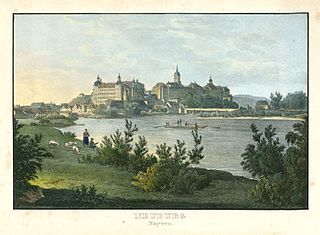 W
WThe Battle of Neuburg occurred on 27 June 1800 in the south German state of Bavaria, on the southern bank of the Danube river. Neuburg is located on the Danube between Ingolstadt and Donauwörth. This battle occurred late in the War of the Second Coalition (1798–1802), the second war between Revolutionary France and the conservative European monarchies, which included at one time or another Britain, Habsburg Austria, Russia, the Ottoman Empire (Turkey), Portugal and Naples. After a series of reverses, several of the allies withdrew from the Coalition. By 1800, Napoleon's military victories in northern Italy challenged Habsburg supremacy there. French victories in the upper Danubian territories opened a route along that river to Vienna.
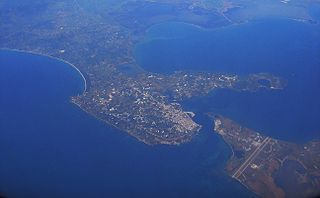 W
WPreveza is a city in the region of Epirus, northwestern Greece, located on the northern peninsula at the mouth of the Ambracian Gulf. It is the capital of the regional unit of Preveza, which is part of the region of Epirus. The Aktio-Preveza Immersed Tunnel – the first and so far only undersea tunnel in Greece – was completed in 2002 and connects Preveza in the north to Aktio in western Acarnania in Aetolia-Acarnania south of the mouth of the Ambracian Gulf. The ruins of the ancient city of Nicopolis lie 7 kilometres north of the city.
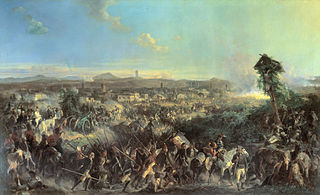 W
WThe Battle of Novi saw a combined army of the Habsburg monarchy and Imperial Russians under Field Marshal Alexander Suvorov attack a Republican French army under General Barthélemy Catherine Joubert. After a prolonged and bloody struggle, the Austro-Russians broke through the French defenses and drove their enemies into a disorderly retreat. Joubert was killed while French division commanders Catherine-Dominique de Pérignon and Emmanuel Grouchy were captured. Novi Ligure is in the province of Piedmont in Italy a distance of 58 kilometres (36 mi) north of Genoa. The battle occurred during the War of the Second Coalition which was part of the French Revolutionary Wars.
 W
WThe Battle of Ostrach, also called the Battle by Ostrach, occurred on 20–21 March 1799. It was the first non-Italy-based battle of the War of the Second Coalition. The battle resulted in the victory of the Austrian forces, under the command of Archduke Charles, over the French forces, commanded by Jean-Baptiste Jourdan.
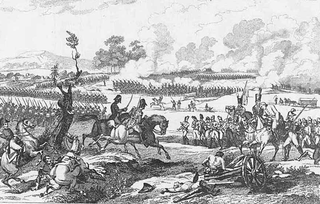 W
WThe Battle of Pozzolo also known as the Battle of the Mincio River and Monzambano was fought during the War of the Second Coalition. A French army under General Guillaume Brune crossed the Mincio River and defeated an Austrian force under General Heinrich von Bellegarde. The Austrians were subsequently pushed back to Treviso where the Armistice of Treviso was signed. This truce would lead to the Treaty of Lunéville and the withdrawal of Austria from the war.
 W
WThe Battle of Stockach occurred on 25 March 1799, when French and Austrian armies fought for control of the geographically strategic Hegau region in present-day Baden-Württemberg. In the broader military context, this battle constitutes a keystone in the first campaign in southwestern Germany during the Wars of the Second Coalition, part of the French Revolutionary Wars.
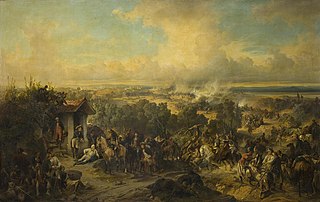 W
WThe Battle of Trebbia or the Napoleonic Battle of the Trebbia was fought near the Trebbia River in northern Italy between the joint Russian and Habsburg army under Alexander Suvorov and the Republican French army of Jacques MacDonald. Though the opposing armies were approximately equal in numbers, the Austro-Russians severely defeated the French, sustaining about 6,000 casualties while inflicting losses of 12,000 to 16,500 on their enemies. The War of the Second Coalition engagement occurred west of Piacenza, a city located 70 kilometres (43 mi) southeast of Milan.
 W
WThe combat of Turbigo was an episode of the War of the Second Coalition It took place on May 31, 1800 in Turbigo between Austrians and French, the latter coming from Piedmont after crossing the Alps. On May 30, 1800 the French soldiers of the Boudet division entered Novara. Also on the 30th, General Duhesme took up position with the Boudet and Loison divisions on the banks of the Ticino river, the Boudet division was placed in front of Trecate and that of Loison in Vigevano and surroundings. On May 31, 1800 Napoleon Bonaparte was in Novara. Napoleon Bonaparte, First Consul at the time, exploited the uncertainty of his adversaries and set off towards Ticino river.
 W
WBattle of Verona on 26 March 1799 saw a Habsburg Austrian army under Pál Kray fight a First French Republic army led by Barthélemy Louis Joseph Schérer. The battle encompassed three separate combats on the same day. At Verona, the two sides battled to a bloody draw. At Pastrengo to the west of Verona, French forces prevailed over their Austrian opponents. At Legnago to the southeast of Verona, the Austrians defeated their French adversaries. The battle was fought during the War of the Second Coalition, part of the French Revolutionary Wars. Verona is a city on the Adige River in northern Italy.
 W
WThe Battle of Wiesloch occurred on 3 December 1799, during the War of the Second Coalition, part of the French Revolutionary Wars. Lieutenant Field Marshal Anton Count Sztáray de Nagy-Mihaly commanded the far right wing protecting the main Austrian army in Swabia, under the command of Archduke Charles, Duke of Teschen. With the victory at Wiesloch, Sztáray's force drove the French from the right bank of the Rhine and relieved the fortress at Philippsburg.
 W
WThe Battle of Winterthur was an important action between elements of the Army of the Danube and elements of the Habsburg army, commanded by Friedrich Freiherr von Hotze, during the War of the Second Coalition, part of the French Revolutionary Wars. The small town of Winterthur lies 18 kilometers (11 mi) northeast of Zürich, in Switzerland. Because of its position at the junction of seven roads, the army that held the town controlled access to most of Switzerland and points crossing the Rhine into southern Germany. Although the forces involved were small, the ability of the Austrians to sustain their 11-hour assault on the French line resulted in the consolidation of three Austrian forces on the plateau north of Zürich, leading to the French defeat a few days later.
 W
WIn the First Battle of Zurich on 4 – 7 June 1799, French general André Masséna was forced to yield the city to the Austrians under Archduke Charles and retreat beyond the Limmat, where he managed to fortify his positions, resulting in a stalemate.
 W
WThe Second Battle of Zurich was a key victory by the Republican French army in Switzerland led by André Masséna over an Austrian and Russian force commanded by Alexander Korsakov near Zürich. It broke the stalemate that had resulted from the First Battle of Zurich three months earlier and led to the withdrawal of Russia from the Second Coalition. Most of the fighting took place on both banks of the river Limmat up to the gates of Zürich, and within the city itself.